Transplanting seedlings is one of the easiest ways to give your garden a head start for the growing season.
It is a relatively straightforward process, which you can master with practice.
However, there are some things you will need to keep in mind which can significantly impact the performance of your plants.
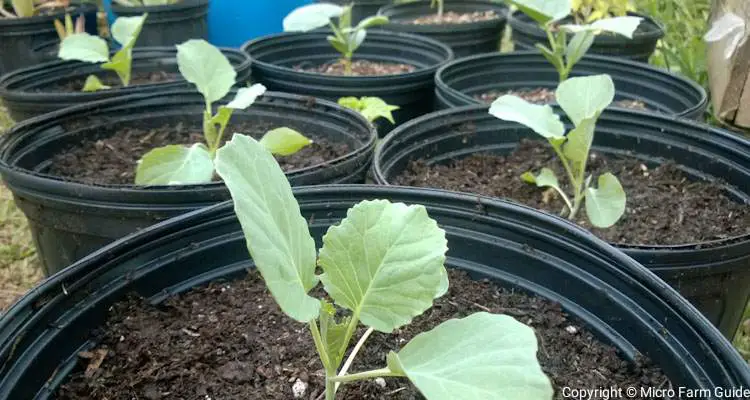
In this article, we will walk you through the step-by-step process we use to transplant seedlings. However, before we get started, let’s look at the best time to do so.
When To Transplant Seedlings Outside
Generally, it is best to transplant seedlings outside when the soil temperature is at least 65°F, and the seedlings have developed their first set of “true leaves” and proper root system.
I prefer to transplant seedlings in the afternoon when it is cool outside. However, you can also transplant them anytime during the day if it is overcast or raining.
If you must transplant seedlings in the morning, please do so before the sun is at its peak, and ensure you water the area thoroughly after transplanting.
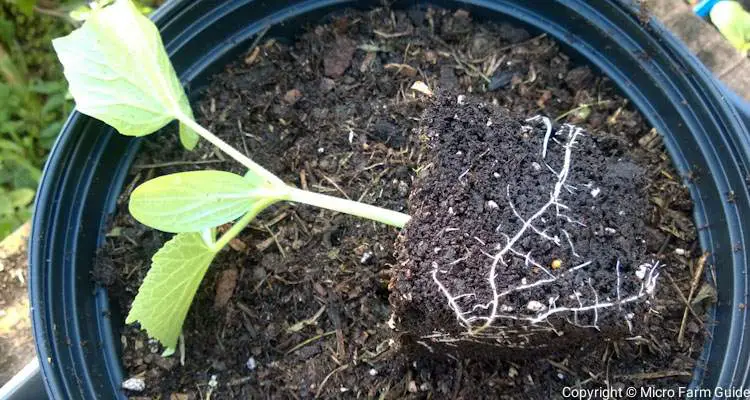
7 Steps In Transplanting Seedlings
Follow the steps below to transplant seedlings to the garden or larger containers.
1. “Harden Off” Seedlings
Before transplanting, you must “harden off” your seedlings to get them accustomed to the new environment.
You can do this by placing the seedlings outside early in the morning, preferably next to the growing area.
Leave them there for an hour or two, then move them to a partially shaded area for the rest of the day.
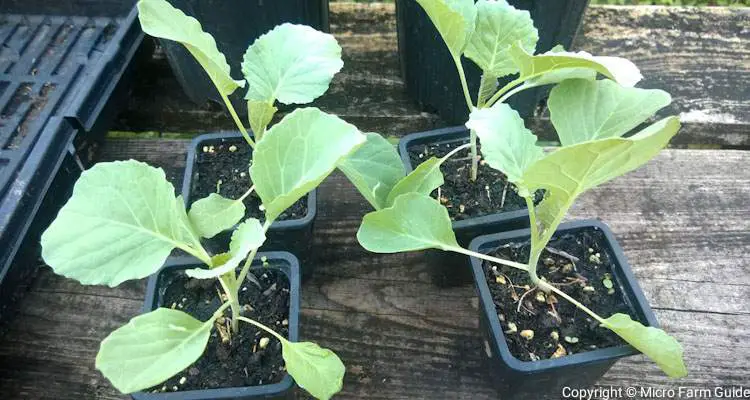
Increase the duration of direct sun exposure by an hour each day until the seedling can remain outside for the entire day.
This usually takes about 7 to 10 days, not counting overcast days, during which plants can remain outside without any issue.
2. Prepare Soil For Planting
While waiting for the seedlings to get ready, you can use this time to prepare the soil.
Generally, most vegetables and herbs prefer fertile, well-drained soil that can retain moisture.
You can remove unwanted plants, such as weeds, then amend the soil with compost or other organic inputs.
In the case of container gardening, you can use this time to choose your potting mix or rejuvenate used potting mix.
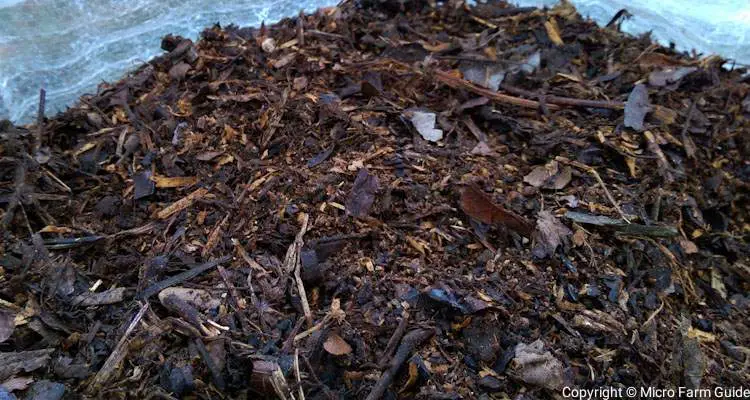
3. Soak Seedlings (Allow To Drain)
On the day of transplanting, you need to water seedlings thoroughly to ensure they are well hydrated.
You can place the seedling tray or pot in a water container and allow it to wick up the potting mix.
I also like to add leaf mold or liquid organic fertilizer, which lessens the effects of transplant shock.
Afterward, allow the excess water to drain from the potting mix for at least half an hour before transplanting.
4. Dig A Hole In The Soil
Mark out the spacing for your plants. You can use the spacing on the package or another suitable guide.
Then dig a hole at least the same depth and twice the width of the root ball of your seedlings.
Remember, plants such as tomatoes will require much deeper holes since roots will grow along their stems.
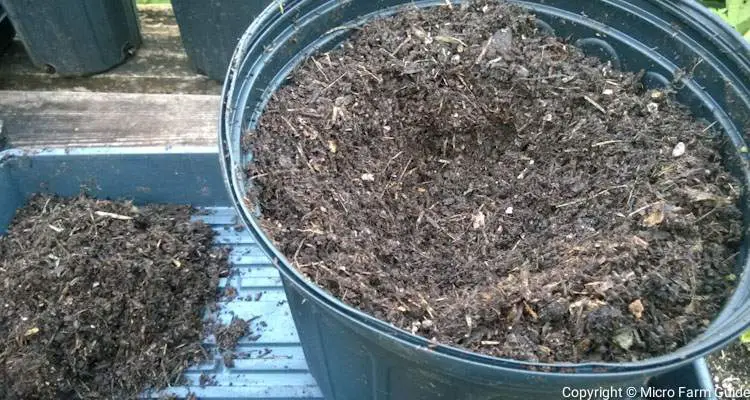
5. Inspect Roots Of Seedlings
Next, remove the seedlings from the individual cells or pots. Use a flat object to pry them out of their container.
Inspect the roots to ensure they are well-developed. They should be white and easily seen on the surface of the potting mix but not yet spiraling.
If the potting mix falls apart, there is a chance that the roots are still underdeveloped or the potting mix needs to drain more.
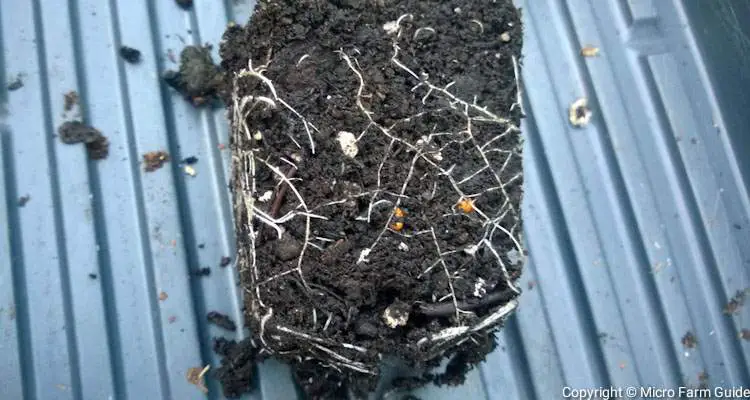
Note: You can tilt larger pots on their sides and gently press on the bottom of the container to push the seedling out.
6. Place Seedlings In Hole
Double-check the hole depth by placing a similar-sized container inside of it.
Afterward, place the root ball inside the hole, ensuring the seedling is upright.
Fill in the hole by pulling soil or potting mix around the root, then cover the roots according to the crop.
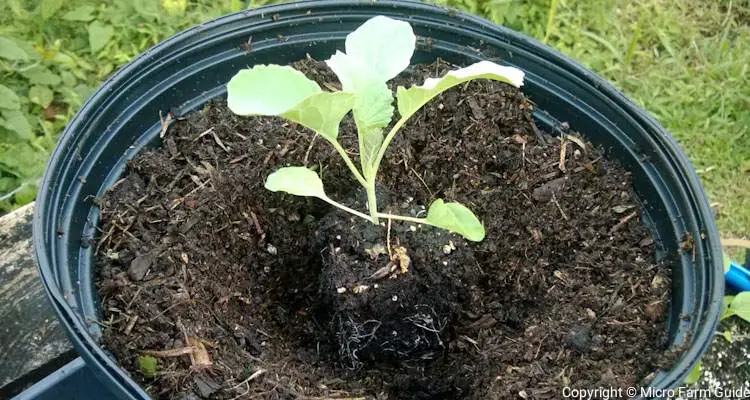
7. Mulch And Water Plants
Cover the area around the seedling with mulch, then water thoroughly.
You can use water or dilute fertilizer. This will help minimize transplant shock and encourage the seedling to grow.
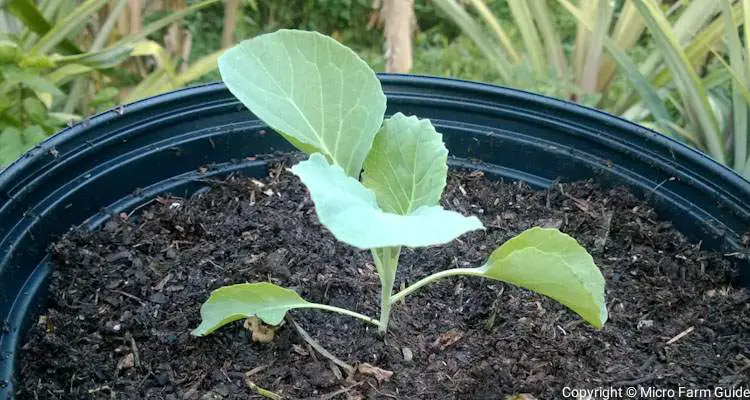
How Deep Should Seedlings Be Planted?
Some plants produce roots wherever their stems come into contact with soil, while others tend to rot when this happens.
As a result, the depth to which seedlings should be planted will depend on the growing habits of the specific plant.
For example, you should bury the stems of peppers, eggplants, and tomatoes, leaving only the top set of true leaves above the soil.
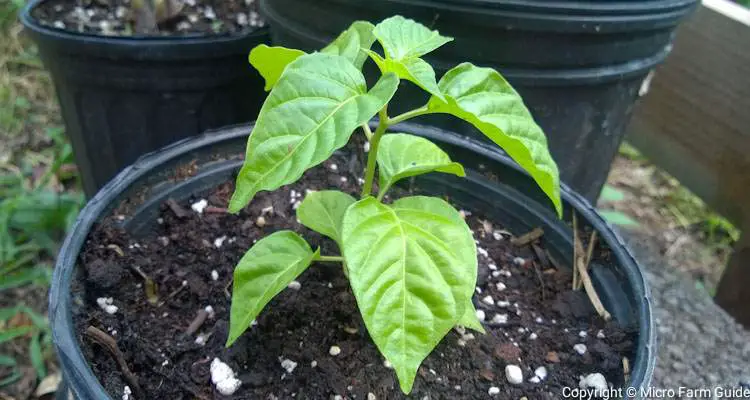
While Lettuce, cabbages, beets, and strawberries prefer to have only their roots covered.
Cucumbers, pumpkins, cantaloupe, and watermelons should be planted up to the base of their first leaves.
I usually plant seedlings a bit deeper in containers than when planting in the soil, so long as their leaves are not covered.
Related Questions
Can I Put My Seedlings Outside During The Day?
You can put seedlings outside during the day, provided they are acclimated to the temperature. If sown indoors, you must “harden off” the seedling by gradually increasing their exposure to outside conditions.
How Big Should Seedlings Be Before Transplanting?
The seedling should be at least 2 inches tall and have at least one pair of “true leaves” and a well-developed root system before transplanting. However, the exact size depends on the plants.
What Is The Best Way To Transplant A New Seedling?
The best way to transplant a new seedling is to first soak it in water to ensure it is well hydrated, then transplant it into loose, fertile, well-prepared soil.
How Do You Transplant Seedlings Without Killing Them?
To transplant seedlings without killing them, you need to ensure that they are hydrated and have a well-developed root system. Ideally, transplanting should be done when cool outside and the area should be watered thoroughly afterward.

